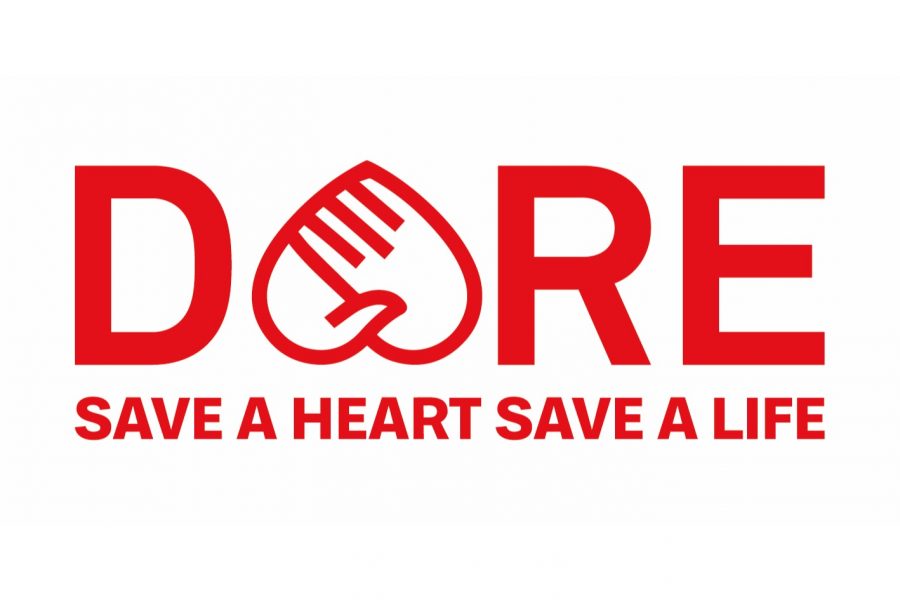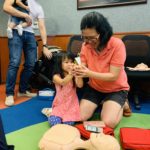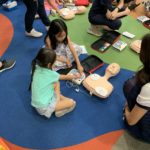By Han Ming Xuan (with thanks to Dr Jade)
Why mindfulness and CPR?
Hearing a word like “mindfulness” evokes such zen and tranquility. But what about “CPR”? It might just lead us to picture an adrenaline-pumping, dramatic scene of rigorous chest compressions delivered with the sole objective of saving someone’s life. And for most of us, saving a life isn’t something to be ticked off in tomorrow’s to-do list. It is a chance, just like that deal you have been waiting to seize in Shopee, an opportunity that comes in a flash, randomly and unexpectedly.
So what are we to do when we are confronted with this opportunity of a tug of war with the grim reaper except that the life we are fighting for is someone else’s? While being trained in CPR will surely and most definitely give us an advantage in this sudden task of life-saving, taking that step forward is what most of us struggle with.
Why is CPR important?
CPR, short for cardiopulmonary resuscitation, involves the compression of someone’s chest with both hands (elbows locked of course!). The aim is to pump the heart from the outside and get blood flowing round the body and to vital organs, which maintains crucial perfusion till help arrives. So why can’t we just wait till help arrives? Because we technically are that help! (well, Part I of that help) We are that time-critical intervention, without which the cardiac arrest victim’s chances of survival decrease by 10% as each minute passes.
Psychological stress and CPR
Granted, CPR is stressful for the rescuer. A narrative review [1] published in Switzerland this year compiled findings from 21 other studies that summarised data on the influence of stress while performing resuscitation. It was found that stress was increased during CPR (duh) and may be associated with poorer performance although it could also be a protective factor that leads to more superior performance. How can increased cortisol levels possibly be protective?
Practising mindfulness and CPR
The answer might just lie in the practice of mindfulness. In 2013 a group of medical intensivists developed a stress coping strategy for medical students performing CPR and tried the method in a randomised-controlled trial. [2] It was found that stress was significantly reduced in the group instructed in this method. Now what was that method? The medical students were simply tasked to ask two questions out loud: “What is the patient’s condition?” and “What immediate action is needed?”. Just like how mindfulness places huge emphasis on the importance of being aware and being in the present, those 2 questions guided the medical students to focus on the tasks at-hand, to be self-aware and present in the scenario, albeit a simulation.
Some 4,498 miles away in Minnesota, another group of researchers explored the same concept of mindfulness and its impact on interprofessional CPR. [3] But this time, the Muse Brain Sensing Headband (at USD 199 a piece) was issued to participants, who were tasked to use it daily over 4 weeks, just like that fancy serum you smear your skin with every other night. This similarly led to significantly higher emotional balance with participants reporting that they had better “introspection” during resuscitation scenarios.
IRL…
Seeing someone collapse on the ground is confronting. And the ways to “be mindful” are just as diverse as they are doable. Anything goes, headband or not. If we spend just two seconds talking ourselves through the reality and focusing on what can be done – “Oh no, someone is lying on the ground. What can I do to help?”, “There is no pulse, and no breathing”, “I am capable of performing CPR and I want to make this work” – we might just be someone’s hope for another chance at life.
And so you take a deep breath, step forward and then alas, you become acutely aware of the presence of many people around. Second thoughts start streaming in…stay tuned as we learn more about the bystander effect and how to tackle it in part 2 of this series.
References
[1] Vincent A, Semmer NK, Becker C, Beck K, Tschan F, Bobst C, Schuetz P, Marsch S, Hunziker S. Does stress influence the performance of cardiopulmonary resuscitation? A narrative review of the literature. Journal of Critical Care. 2020 Sep 25.
[2] Hunziker S, Pagani S, Fasler K, Tschan F, Semmer NK, Marsch S. Impact of a stress coping strategy on perceived stress levels and performance during a simulated cardiopulmonary resuscitation: a randomized controlled trial. BMC emergency medicine. 2013 Dec;13(1):1-9.
[3] Kelm DJ, Ridgeway JL, Gas BL, Mohan M, Cook DA, Nelson DR, Benzo RP. Mindfulness meditation and interprofessional cardiopulmonary resuscitation: a mixed-methods pilot study. Teaching and learning in medicine. 2018 Oct 2;30(4):433-43.

Motivation behind this series
Starting out as a paramedic trainee got me thinking hard about psychological well-being. For too long topics like these are shunned by lay people and healthcare professionals within and outside the fields of medicine because for some reason, being in such professions, we somehow are expected to “act the part” in the face of trauma and adversity: suck it up and move on! No denying that we are all resilient and tough individuals but a culture of not speaking up trivialises the importance of mental health.
Speaking to Dr. Jade led me to realise that even at her level of seniority, experience and standing, mindfulness and well-being are on the top of her list even as a senior paediatric emergency specialist. She inspires so many and she paves the way for more open conversations about well-being in healthcare and beyond. My gratitude goes to Dr. Jade for her unwavering support and guidance throughout the conceptualisation and writing of this series.












1 Comment
Leave your reply.